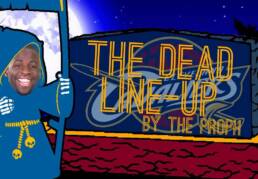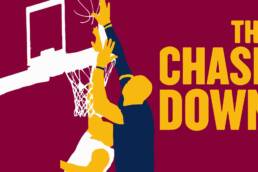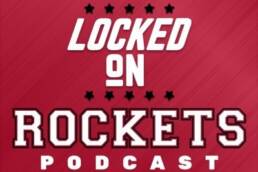I am become death, the destroyer of worlds.
J. Robert Oppenheimer, Inventor of the Atomic Bomb

In the Eastern Conference Playoffs, the Cavalier’s strutted their way through the East like mighty Greek Gods raining fire from the Heaven upon their unworthy Atlanta/Detroit/Toronto foes. It was a cake-walk of epic proportions: truly the most dominant performance by a team that outclassed their opponents in an upsettingly casual manner. Even after dropping 2 straight (!!!) in the Eastern Conference Finals to a *ehem* “plucky” Toronto Raptors team, LeBron remained utterly unperturbed:
“I’ve been a part of some really adverse situations, and I just didn’t believe that this was one of them,” James said after Game 5.
Now, that quote can be taken any number of ways. Among them: James’ opinion of the Raptors compared to the Cavs is not high.
Joe Varden, LeBron James’ confidence trumped adversity and the Toronto Raptors
That quote cannot “be taken any number of ways:” LeBron never broke a sweat and the Raptors never stood a chance.

Now, with Game 1 in the books, LeBron knows that they’re now in different depths, going from the big fish in a little pond to the big fish in a shark tank — except all the sharks have lazers on their heads.
Lazer sighted-shooting, anyways. As in Steph Curry, Klay Thompson, and the Warriors — they’re very accurate, as if they were using lazer-sighted shooting.
“Splash” Bros.
Like the “fish out of water” metaphor I just beat to death, the Cavaliers showed promise early on, but it later withered under further scrutiny. Though I could edit out my butchered attempt at comedy, I’m willfully refusing to do so; the problem is, the Cavs cannot change their past and choose instead to either pursue a stretch-big who poses less of a glaring defensive liability, building a team with the understanding that LeBron is demonstrably more effective as a power-forward at this point in his career.
Yes, no one expected LeBron’s shooting to fall off a cliff, and yes, many (myself included) were convinced that Love would evolve his defensive skills in the same way he modernized his offensive skill-set, AND YES, we didn’t know that the Warriors were a Juggernaut biding their time until the massive weight of Marc Jackson’s coaching ineptitude was lifted.
What the Cavaliers’ could’ve predicted is the wholesale de-specialization of the league — in fact, they in particular should have known better.
Before there was Draymond, there was LeBron — a talented and revolutionary wing player with a post-game to complement his guard skills, rebounding to complement his play-making, quickness to complement his strength, and speed to complement his size.
LeBron played alongside a core of elite players like Chris Bosh, Dwayne Wade, and Shane Battier, each of whom possessed a skill set so diverse that it cannot be encapsulated without using at least a dozen adjectives and a half-a-dozen nouns. Chris Bosh is not just an offensively gifted big with range; he is also an unrecognized defensive stalwart and an under-rated facilitator. Dwayne Wade was not just a high-volume shooter: he was an explosive defender (the best shot-blocking guard in NBA Playoffs history as of 2016) and a back-to-the-basket maestro, despite being listed at 6’4″.
Shane Battier is also awesome, but you didn’t sign up for a lecture about how great Shane Battier is when you clicked on this article, and I can respect that.
The Cavaliers’ failed to recreate the dynamism of LeBron’s Miami Heat. Instead, the Thunder stepped up to the plate, bringing the Warriors to within a game of elimination in the Western Conference Finals by utilizing line-ups with elite length and versatility on the defensive end. Though they ultimately failed to dethrone the Warriors, they came significantly closer than most expected to upsetting the defending champs. The Thunder briefly became the only team that could effectively counter the Line-Up of Death by also abandoning positional coverage, with their own line-up of Westbrook, Waiters, Durant, Roberson, and Ibaka:

The Line-Up of Death’s Shooting Chart during the regular season

The Line-Up of Death’s Shooting Chart in the first 4 games of the Western Conference Finals
When Ibaka couldn’t continue switching on to Curry and Thompson and effectively contesting their shots, the Thunder’s defensive scheme fell apart at the seams, immediately resulting in two astronomic shooting performances from Klay in Game 6, and then Steph in Game 7. In my pre-season championship prediction, I picked the Thunder because of my confidence in Coach Donovan’s ability to adapt in a way that Scott Brooks didn’t in regards to utilizing Durant’s and Ibaka’s versatility at the 4 and 5 positions; however, I admitted that their success would be dependent on the Thunder’s players’ increased versatility:
It’s all gravy when players take the time to develop skills and patch up holes in their games, but more often than not it doesn’t happen. Instead of crossing his fingers, hoping that either Singler develops as a defender, or that Roberson starts nailing corner threes, OKC’s new head coach, Billy Donovan, will adapt player rotations catered to each player’s individual strengths:
The Thunder’s championship aspirations will live or die depending on not only Donovan’s ability to craft a system around his players, but also the players’ abilities to play their role within the system.
Systemic Shock, Chris Axmann
The cat is out of the bag when it comes to offensive versatility from 1–5, and the ‘position-less league’ is a nauseatingly over-used way of describing the league’s transformation as inspired by players of Magic Johnson’s and LeBron James’ ilk. There was a time not too long ago that a ‘hybrid player’ was criticized for being a ‘tweener,’ or a ‘big-man with range’ was labeled a flimsy European man-child without the appropriate virility to just ‘take it to the basket.’ The league still criticizes Russel Westbrook for not being a ‘traditional point-guard.’ Traditionalism for traditionalism’s sake isn’t just foolish: its down-right un-American. You know what else is traditional? That’s right: Absolute Monarchy.
Like America’s sociopolitical evolutions, the rates at which the NBA begins to accept necessary changes to the collective conscience are wildly disparate. The NBA’s Civil War was waged over floor-spacing — two sides divided by a metaphorical Mason-Dixon 3-point line — but we still have so far to come in terms of the dynamic implications of playing positionless defense by switching coverage after screens.
Game 1 was a microcosm of the Warriors juggernaut which is, in turn, a treatise on the power of defensive versatility. Defensive versatility is the unsung hero and the bottom line of the Warriors’ dominance: Game 1 wasn’t won with elite 3-point-shooting, but with the Warriors’ ability to switch on screens and maintain their defensive integrity.
Given the degree of lineup malleability in the league right now, being able to defend multiple players is a supremely valuable trait. To some degree, it’s even necessary. Not every team wants to switch on picks, but their big man better be able to navigate the perimeter, lest they become fodder for stretch 4s and pick-and-rolls. That forms the entire basis of the small ball trend. Rim protection is a critical part of defense — you need something to shut down drives, roll men and cutters — but if your rim protector is a stiff, then teams will pace and space him to death.
On the flip side, players who can defend across positions, like Green, enable all sorts of lineup permutations. Does positionless basketball exist? Not quite, but so long as your bases are covered on defense, you can play whichever way you want on offense.
At a point in time where weaknesses are magnified and exploited more than ever, being able to do as much as possible is key. You see this on both sides of the ball, but defense, as always, plays catch up.
Defensive versatility is the NBA buzzword you should know, Kevin Yeung
As Kevin astutely points out, the league is often slow to appreciate the game-redefining advantages of departures from traditional basketball thinking. In March of 2015, I wrote about the implications of building a line-up in which every player can switch on to any of the opposing team’s 5 men:
Defensively, 5 similarly sized and similarly gifted athletes can freely switch between who they are defending without missing a beat. Even if a center sets a pick for a point guard, Carter-Williams won’t be screwed by switching coverage to a slightly larger opponent, and Henson similarly won’t be screwed by switching to a slightly more athletic opponent. The result is a fluid defense that is impenetrable on good nights and still frustratingly difficult to take advantage of on bad nights.
Bucking Convention (maybe), Chris
This excerpt is part of a larger discussion about the Bucks’ rebuild which I wrote in March of last year. Kidd’s vision for Milwaukee might not ever come to fruition because of their later acquisition of Monroe. Arman Bery expressed this sentiment in an article following the signing:
Looking to the future, Milwaukee has a talented young nucleus of Middleton, Parker, and Antetokounmpo, each of whom have shown enough promise to build a team around. Monroe was envisioned to help a team that in the 2014–2015 was an elite defense (second in defensive efficiency) but struggled to be an efficient offensive team (25th in offensive efficiency). The hope was for Monroe to come in and replace Henson and other rotational bigs, providing a viable offensive threat in the post. Unfortunately, he has been the defining factor in the regression of the Buck’s defense, and additionally, the relative lack of shooting on the roster has stifled Monroe’s ability to operate freely on the block.
Greg Monroe: the Choice between Adaptation or Regression, Arman Bery
The Cavaliers’ face a soberingly similar reality in regards to Kevin Love.
The following is an interesting mathematical break down on SB Nation’s Golden State of Mind:

So, what are we looking at? The left side are the raw numbers from stats.nba.com. The right are the weights of players, and then the simple arithmetic I did. The right-most column is just a semi-normalized version, which is the “Work D” divided by the average “Work D” of all the players who played in the game. Meaning, KLove’s 2.557 means that he did two-and-half-times more “work” on defense than the average player did in that game (the “average” is artificial; just the arithmetic mean).
What’s interesting about that is that the top 2 guys are Kevin Love and LeBron James; 2 of the Cavs Big 3. The 4 guys who did the most work — remember, it’s just basically how much effort you’re spending to move your body around, at the speed that the NBA tracked you on D, over the distance that the NBA tracked you on D — were Cavs, and that all of the Cavs Big 3 are in the top 6 of total work done. In fact, each of the top 5 “workers” on D on CLE do more “work” on defense than each of the top 5 “workers” on D on GSW (almost…Kyrie does a bit less than Draymond).
One would think that the Warriors’ effectiveness would correlate with more effort and movement; but in reality, chasing players over screens, scrambling to undo mismatches, and operating outside of your depths as a big on defense is exhausting — mentally and physically. Kevin Love is particularly exploitable in this regard, resulting in a -17 net rating against the Warriors in Game 1 of the Finals.
Much has been made about the demoralizing effect of the unbelievable 3 point-shooting of the Splash Bros, but in conjunction with the deflating effect of futile defensive possessions spent hopelessly contesting plays as the intentional target of exploitation, the Warriors’ defensive versatility sucks the life out of opposing teams possession after possession. This is something that the Cavaliers could do to their Eastern Conference opponents in a way that isn’t viable against the Warriors. At 1:15 in the video below, you witness the Hawks fall victim to an on-ball switch which was only one of a record-setting 25 threes, many of which were the result of the same strategy:
The Cavaliers not only led the Eastern Conference in 3 pointers made, but also led in 3pt-% by over 10%:


In the first game of the Finals, the Cavaliers only made 7 of the 21 threes that they attempted. Instead, without the ability to exploit mismatches created by setting screens, the Cavaliers’ offense devolved into contested jumpers and low-efficiency isolation play.
Don’t expect that to change in Game 2. The Cavaliers’ have a real problem on their hands: it seems that they’ve fallen victim to the winds of change.











